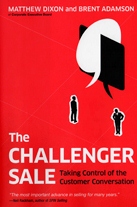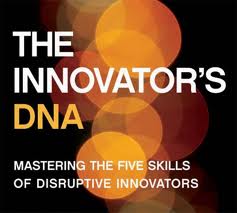I recently read The Challenger Sale by Matthew Dixon and Brent Adamson of the Corporate Executive Board and then picked it up again, with a highlighter and red pen and started again.
If you haven’t read it, I’d highly recommend it. It’s a no-brainer if you’re in sales or live in or around the sales or buying process as product marketing, product management and others do. The research, findings and focus on sales success will connect with you.
The focus of the Challenger Sale for sales is not to build relationships, but to challenge them. To rethink, reshape and change how you engage and lead.
Whether you lead, develop, build, prepare, market, sell or support products that engages in a business-to-business (B2B) model, you know things have changed. In the mind of the buyer it’s not all about the economic wash from the past several years, but what you will do to transform the business and ultimately deliver a solution. While the book focuses on the journey of evolving solution selling, it have a definite message for product leadership. You have to “tailor for resonance.”
As Dixon and Adamson confide; “It’s the ability to tailor the teaching message to different types of customers – as well as different individuals within the customer organization is what makes the teaching pitch resonate and stick with customers.”
I recently listened to a CxO share his frustration and story of why his organization didn’t buy from my client. In the discussion, he stated, “They didn’t get it. they didn’t listen. They didn’t understand my problems, nor did they try to understand my objectives. Forget about an innovative approach. I suffered through vendor pain.”
How can product leaders teach the message to different types of customers and build the level of resonance with sales?
“Tailoring relies on the rep’s knowledge of the specific business priorities of whomever he or she is talking to – the specific outcomes that particular person values most, the results on the hook to deliver for their company, and the various economic drivers most likely to affect those outcome” shares The Challenger Sale.
I believe product leaders must possess, know and build three key areas of knowledge and expertise to support the challenger model:
Understanding of the buying process – “Buyers have exponentially more choices and virtually instant access to information about them. Long before they talk to a sales rep, buyers are conducting research and making up their own minds about what’s important to them, eliminating companies on the basis of whatever information they can easily discover” shared Adele Revella of The Buyer Persona Institute.
Buyer personas – “Basing your work on buyer personas prevents you from sitting on your butt in your comfortable office just making stuff up, which is the cause of most ineffective marketing. By truly understanding the market problems that your products and services solve for your buyer personas, you transform your marketing from mere product-specific, ego-centric gobbledygook that only you understand and care about into valuable information people are eager to consume” confides David Meerman Scott.
Speak the language of the buyer – in her recent post, Get Over Yourself, Jennifer Doctor shared, “In aligning with their buying process (not what you think they do or what they should do, but how they actually buy the product,) you have to develop a story. The more memorable the story, the better it will be for you. The story has to be about how you have helped others solve similar problems, remembering it’s not about your product. Once you have a story, you can engage.”
With these three areas of knowledge, you’ll be know more about the buying process, understand the dynamics of whose buying, and speak in the language buyers. Don’t leave it to salespeople to translate what you’re trying to convey.
Additionally, you’ll be better prepared for internal conversations, offer credible insights and align with stakeholders while assisting sales and marketing in creating value, not just messaging or positioning. Let’s tailor our resonance to transform the sales channel.
I welcome your thoughts and comments and challenge you to get a copy of The Challenger Sale, read it and apply it to your product leadership.
If you like the post, please share it on LinkedIn, Twitter or Google+. Here’s a quick link to use. The Challenger Sale – What Product Leaders Need to Know. A new post by @jim_holland http://wp.me/pqeWU-u2






